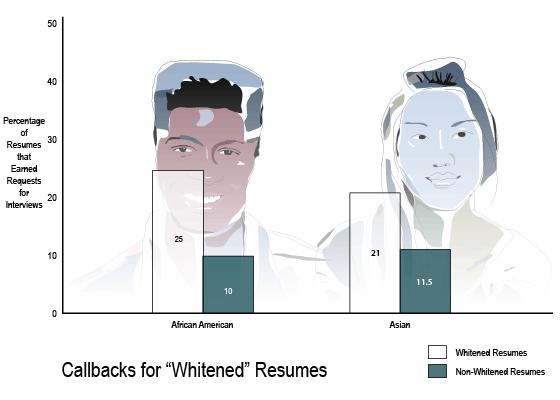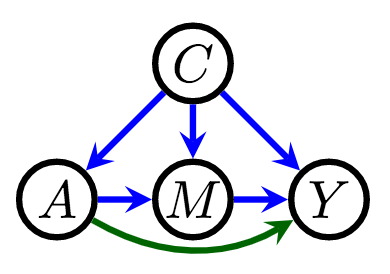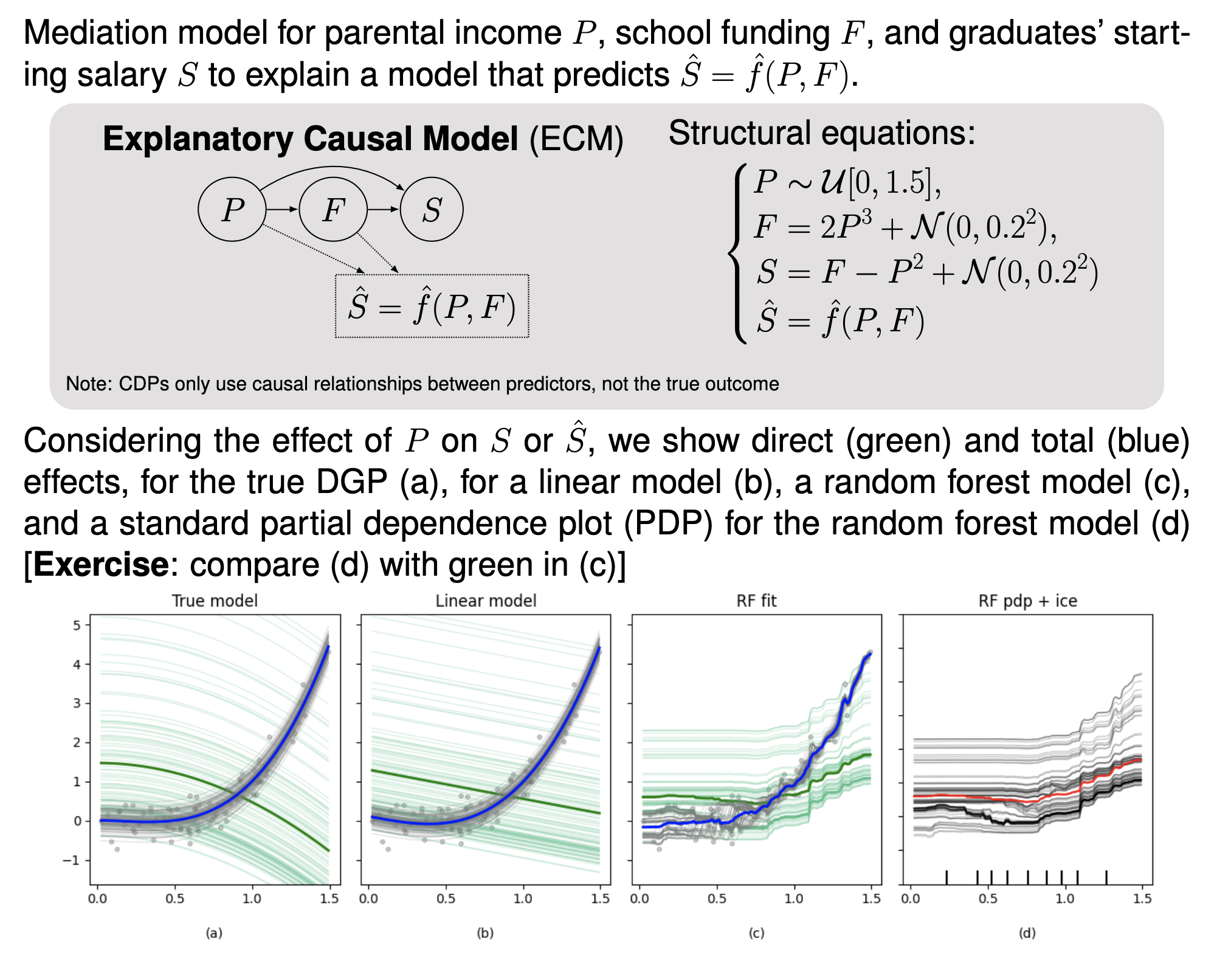class: bottom, left, title-slide .title[ # Using causal models ] .subtitle[ ## for fairness and explanations ] .author[ ### Joshua Loftus (LSE Statistics) ] --- class: split-four <style type="text/css"> .remark-slide-content { font-size: 1.2rem; padding: 1em 4em 1em 4em; } </style> ### Credit to my excellent collaborators #### Alan Turing Institute (2016-) <img src="ricardo.png" width="167" /><img src="chris.png" width="165" /> Ricardo Silva, Matt Kusner (UCL) Chris Russell (AWS) --- #### NYU (2020-) Julia Stoyanovich, Ke Yang, Lucius Bynum <img src="julia.png" width="25%" /><img src="ke.jpg" width="25%" /><img src="lucius.png" width="25%" /> #### LSE (2022-) Sakina Hansen <img src="sakina.jpg" width="30%" /> --- class: inverse, center, middle # Motivating example --- ### The red car example Consider a car insurance company that wants to predict the risk of insuring potential customers using data on - Gender `\(A\)` - Car color `\(X\)` - Driving records `\(Y\)` ML task: learn a function `\(f(X,A)\)` to predict `\(Y\)` Why? Use the learned function `\(f\)` to predict the risk of the policy for a new customer. **Q**: Is it fair to fit a function `\(f(X) \approx Y\)`? **A**: It depends on the *underlying causal structure of the world* --- Let's generate some data in an idealized world: ```r A <- rbinom(1000, 1, .5) U <- rnorm(1000) X <- A + U > 1 Y <- U > 1/2 world <- data.frame(Gender = factor(c("Other", "Woman")[as.numeric(A)+1]), CarColor = factor(c("Silver", "Red")[as.numeric(X)+1]), Aggressiveness = U, HighRisk = Y) head(world) ``` ``` ## Gender CarColor Aggressiveness HighRisk ## 1 Other Silver 0.07730 FALSE ## 2 Other Silver -0.29687 FALSE ## 3 Woman Silver -1.18324 FALSE ## 4 Woman Red 0.01129 FALSE ## 5 Other Silver 0.99160 TRUE ## 6 Woman Red 1.59397 TRUE ``` --- We can visualize causal relationships between variables in a **directed acyclic graph** (DAG). A directed arrow indicates its starting point is a cause of its ending point. Every variable is a function of all its (directed) parents (and exogenous noise, if the model is probabilistic) <div id="htmlwidget-1817fa4b79b9049ed005" style="width:504px;height:504px;" class="DiagrammeR html-widget"></div> <script type="application/json" data-for="htmlwidget-1817fa4b79b9049ed005">{"x":{"diagram":"graph TB;\n A[Gender]-->X[Car Color]\n U(Aggression)-->X\n U-->Y[Risk]"},"evals":[],"jsHooks":[]}</script> --- There's no relationship between gender and aggressiveness in this data (same for risk) <img src="causal_fairness_and_IML_files/figure-html/unnamed-chunk-6-1.png" width="504" /> --- If the company bases its decisions on `\(X\)` only, and not `\(A\)`, it will charge higher costs to people with red cars: <img src="causal_fairness_and_IML_files/figure-html/unnamed-chunk-7-1.png" width="504" /> --- There are more women with red cars than men (independently of aggression/risk). ```r table(world$Gender, world$CarColor) ``` ``` ## ## Red Silver ## Other 88 432 ## Woman 232 248 ``` To summarize: we started with an ideal world where there is no actual unfairness on the basis of gender, but by *ignoring* gender in our predictions we can actually *create* unfairness Enforcing SCOTUS's definition of fairness leads to unfair predictions because the underlying causal structure of the world was ignored by the model --- class: inverse, center, middle ## What about the real world? --- .small[ **Are Emily and Greg More Employable than Lakisha and Jamal?** (Bertrand and Mullainathan, 2003) Systemic Discrimination Among Large U.S. Employers (Kline et al, 2022) *Whitened Resumes: Race and Self-Presentation in the Labor Market* (Kang et al, 2016) ]  [Source](https://hbswk.hbs.edu/item/minorities-who-whiten-job-resumes-get-more-interviews) --- Randomize (or blind) the **perception** of a sensitive variable (e.g. race) at one (late?) time point  --- class: inverse, center, middle # Causal fairness --- ## Defining fairness causally #### Counterfactual fairness Kusner, Loftus, Russell, Silva. ([NeurIPS 2017](https://papers.nips.cc/paper/2017/hash/a486cd07e4ac3d270571622f4f316ec5-Abstract.html)): Given a DAG, the predictor `\(\hat Y\)` is **counterfactually fair** if `$$\mathbb P(\hat Y_a | x, a) = \mathbb P(\hat Y_{a'} |x, a)$$` #### Proposition (sufficient, not necessary): Any predictor `\(\hat Y\)` which is a function of only non-descendents of `\(A\)` in the DAG is counterfactually fair --- ### Pathway analysis / decomposition .pull-left[  - [Kilbertus et al (2017)](https://papers.nips.cc/paper/2017/hash/f5f8590cd58a54e94377e6ae2eded4d9-Abstract.html): proxies and **resolving variables** ] .pull-right[ - [Kusner et al (2017)](https://papers.nips.cc/paper/2017/hash/a486cd07e4ac3d270571622f4f316ec5-Abstract.html): path-dependent counterfactual fairness (see supplement) - [Zhang et al (2017)](https://www.ijcai.org/proceedings/2017/549) - [Nabi and Shpitser (2018)](https://ojs.aaai.org/index.php/AAAI/article/view/11553) - [Zhang and Bareinboim (2018)](https://aaai.org/ocs/index.php/AAAI/AAAI18/paper/view/16949/0) - [Chiappa (2019)](https://ojs.aaai.org//index.php/AAAI/article/view/4777) - ... ] --- ## [Intersectional](https://en.wikipedia.org/wiki/Intersectionality) fairness *Causal Intersectionality and Fair Ranking* (Yang, Stoyanovich, Loftus, [FORC 2021](https://drops.dagstuhl.de/opus/portals/lipics/index.php?semnr=16187)) - Multiple sensitive attributes, e.g. race and gender - Variety of relationships with other mediating variables - Some of these mediators may be resolving/non-resolving for different sensitive attributes Lots of scholarship, not much using formal mathematical models. See [Bright et al (2016)](https://www.journals.uchicago.edu/doi/abs/10.1086/684173), [O'Connor et al (2019)](https://www.tandfonline.com/doi/abs/10.1080/02691728.2018.1555870), and a few other references in our paper --- ## "Moving company" example .pull-left[ Race, gender, weightlifting test, application score <div id="htmlwidget-ad9c5259da40408845bf" style="width:504px;height:504px;" class="DiagrammeR html-widget"></div> <script type="application/json" data-for="htmlwidget-ad9c5259da40408845bf">{"x":{"diagram":"\ngraph TB\n R-->X\n G-->X\n R-->Y\n X-->Y\n G-->Y\n"},"evals":[],"jsHooks":[]}</script> ] .pull-right[ Weightlifting considered a **resolving variable** (company argues it is a necessary qualification) <img src="../moving.png" width="100%" style="display: block; margin: auto;" /> (See paper for results) ] --- ### Optimizing/allocating interventions - [Making decisions that reduce discriminatory impacts](https://proceedings.mlr.press/v97/kusner19a.html) (Kusner et al, ICML 2019) Optimizing interventions/allocations under causal interference, asymmetric bound on counterfactual privilege - [Disaggregated interventions to reduce inequality](https://dl.acm.org/doi/abs/10.1145/3465416.3483286) (Bynum et al, EAAMO 2021) Avoids using sensitive attributes as causes, optimizes for inequality reduction directly - [Counterfactuals for the Future](https://ojs.aaai.org/index.php/AAAI/article/view/26655) (Bynum et al, AAAI 2023) What can go wrong if we confuse interventional and counterfactual modeling? --- ### Statistical fairness `\(\leftrightarrow\)` causal fairness? **Exercise**: Pick one or more definitions of statistical fairness and determine a DAG/SCM with a related/corresponding definition of [path-specific] counterfactual fairness e.g. what if `\(Y\)` is a resolving variable? --- class: center, middle, inverse # Causal interpretability --- ### Classic methods (context/comparison) #### Decision trees (e.g.: early vaccine eligibility) - If `Age >= 40` then `yes`, otherwise `continue` - If `HighRisk == TRUE` then `yes`, otherwise `continue` - If `Job == CareWorker` then `yes`, otherwise `no` #### Regression - Predictor variables in the dataset: `\(x_1, x_2, \ldots, x_p\)` - Coefficients/**parameters**, unknown: `\(\beta_1, \beta_2, \ldots, \beta_p\)` - Outcome variable, also in data: `\(y\)` - Algorithm inputs the data, outputs: estimated parameters, predictions of `\(y\)` using "recipe" or "weighted" combination $$ \beta_1 x_1 + \beta_2 x_2 + \cdots + \beta_p x_p $$ --- ## Transparent models Understand how the model uses `\(x_1\)` to make a prediction... ## Opaque or black-box models Internal model structure is hidden, or complicated enough to be difficult to understand ### xAI / IML Tools to help human understanding of models Usually focused on input-output --- ## Model-agnostic interpretability If we can only access the input-output interface (e.g. external auditing of a proprietary model) Does this black-box model discriminate? How does it depend on `age`? Various IML tools: variable importance, **partial dependence plots**, local surrogates, "counterfactual" explanations (misnamed) **Problem**: In the question "how does the output depend on a given input?" *what do we mean* by "depend"? e.g. fairness and (proxies for) sensitive attributes --- ## Causal interpretability - *Causal Interpretations of Black-Box Models* (Zhao and Hastie, 2019) Conditions under which a particular IML tool (PDP/ICE plots) can give valid causal conclusions - *Causal Dependence Plots* (Loftus, Bynum, Hansen, 2023 [preprint](https://arxiv.org/abs/2303.04209)) ---  --- class: inverse, center, middle ## Pathways forward ### Conclusions and takeaways --- ### At some point we must decide #### Which (causal) model reveals our beliefs? [George Box](https://en.wikipedia.org/wiki/George_E._P._Box): > [All models are wrong](All_models_are_wrong) but some are useful -- therefore, > ... the scientist must be alert to what is **importantly wrong** > ... **cannot obtain a "correct" one** by excessive elaboration --- class: split-four ### Every DAG is (importantly?) wrong .column[ <div id="htmlwidget-eba9e3f118be43c848ea" style="width:504px;height:504px;" class="DiagrammeR html-widget"></div> <script type="application/json" data-for="htmlwidget-eba9e3f118be43c848ea">{"x":{"diagram":"\ngraph TB\n Race-->Outcome\n"},"evals":[],"jsHooks":[]}</script> ] .column[ <div id="htmlwidget-38263d23391283a2365c" style="width:504px;height:504px;" class="DiagrammeR html-widget"></div> <script type="application/json" data-for="htmlwidget-38263d23391283a2365c">{"x":{"diagram":"\ngraph TB\n Racism-->Outcome\n"},"evals":[],"jsHooks":[]}</script> ] .column[ <div id="htmlwidget-370f82a863938d0dade0" style="width:504px;height:504px;" class="DiagrammeR html-widget"></div> <script type="application/json" data-for="htmlwidget-370f82a863938d0dade0">{"x":{"diagram":"\ngraph TB\n A-->X\n X-->Y\n A-->Y\n"},"evals":[],"jsHooks":[]}</script> ] .column[ <div id="htmlwidget-6b803f6be25297ca7196" style="width:504px;height:504px;" class="DiagrammeR html-widget"></div> <script type="application/json" data-for="htmlwidget-6b803f6be25297ca7196">{"x":{"diagram":"\ngraph TB\n A-->X\n A-->R\n X-->Y\n R-->Y\n A-->Y\n"},"evals":[],"jsHooks":[]}</script> ] **Transparency**: we can say specifically what we disagree on **Interpretation**: meanings of variables, edges (mechanisms) --- #### Problem - Lots of fairness definitions (at least 21!) - Impossibility/trade-offs between them - What do? - How to think about this choice? -- #### Time heuristic "Center" an oft-ignored dimension: **time** (i.e. consider the times when variable values are determined) --- #### Notation for fair classification Desired outcome `\(Y = 1\)`, sensitive attribute `\(A\)`, predictor `\(M\)` (mediator/merit), algorithm score/classification `\(D\)` #### Causal graph: time flows left to right .left-column[ Note: arrows from `\(A\)` may be due to discrimination (e.g. `\(M\)` could be an unfair measure of "merit") ] .right-column[ <center> <div id="htmlwidget-31c1e67d13cd77efc994" style="width:504px;height:504px;" class="DiagrammeR html-widget"></div> <script type="application/json" data-for="htmlwidget-31c1e67d13cd77efc994">{"x":{"diagram":"\ngraph LR\n subgraph \n A((A))-->M((M))\n M-->Y((Y))\n end\n Y-.->D\n A-->Y\n A-.->D\n M-.->D\n"},"evals":[],"jsHooks":[]}</script> </center> ] --- #### Demographic parity Predictions (or decisions) are independent of `\(A\)`: $$ \mathbb P(D = 1 | A = 0) = \mathbb P(D = 1 | A = 1) $$ #### Equality of opportunity (Hardt et al, 2016) Conditional parity, among individuals 'qualified' for the desirable outcome $$ \mathbb P(D = 1 | A = 0, Y = 1) = \mathbb P(D = 1 | A = 1, Y = 1) $$ #### Causal versions (e.g. counterfactual fairness) Pathway analysis, *allowing* a causal pathway to change the prediction is like conditioning on a variable in that pathway --- ### Allowed variables Definition: Variable `\(W\)` determined at time `\(t\)` is "allowed" by fairness definition `\(C\)` if: - `\(C\)` is a conditional fairness definition and `\(W\)` is in the condition - `\(C\)` is a causal pathway definition and `\(W\)` is on an unblocked (i.e. resolving) pathway --- ### Temporal depth heuristic #### Weak heuristic If `\(W\)`, determined at time `\(t\)`, is allowed by `\(C\)` then `\(C\)` "justifies" any unfairness associated with (or causally flowing through) `\(W\)` occurring before `\(t\)` #### Strong heuristic (thick/dense causality) If `\(W\)`, determined at time `\(t\)`, is allowed by `\(C\)` then `\(C\)` "justifies" all unfairness occurring before time `\(t\)` --- ### Applying the time heuristic According to the strong heuristic, *equality of opportunity essentially allows all unfairness* Demographic parity or (non-path-specific) counterfactual fairness do not justify any unfairness (Future work tbd) --- ### Why allow any unfairness? EU [Equality Directive](https://eur-lex.europa.eu/legal-content/EN/ALL/?uri=CELEX:32000L0043), CHAPTER I, Article 2 (b): > indirect discrimination [...] would put persons of a racial or ethnic origin at a particular disadvantage compared with other persons, *unless that provision, criterion or practice is objectively **justified*** by a legitimate aim and the means of achieving that aim are appropriate and necessary. US [civil rights](https://www.justice.gov/crt/fcs/T6Manual7#P) law: > If the evidence establishes a prima facie case of adverse disparate impact [...] courts then determine whether the recipient has articulated a "*substantial legitimate **justification***" [...] --- ### Maybe the law is bad? Disclaimer: I am not a lawyer --- ### Exciting advances in causal modeling Observational data, double machine learning, causal reinforcement learning, ... ### Applications in ethical data science Prioritizing normative values: fairness, privacy, interpretability, replicability, "alignment," ... --- ### Bet on causality Claim: **causality** points us in good directions for research - Choosing which covariates to condition on in fair prediction/decisions - Changing focus from prediction to action, interventions, policy design, etc - Making models/assumptions transparent Deirdre Mulligan at (NeurIPS 2022) causal fairness workshop: > the important role [causal models] can play in supporting **collaborative reasoning about contested concepts, facilitating stakeholder participation** in decisions about how to meet policy goals within technical systems